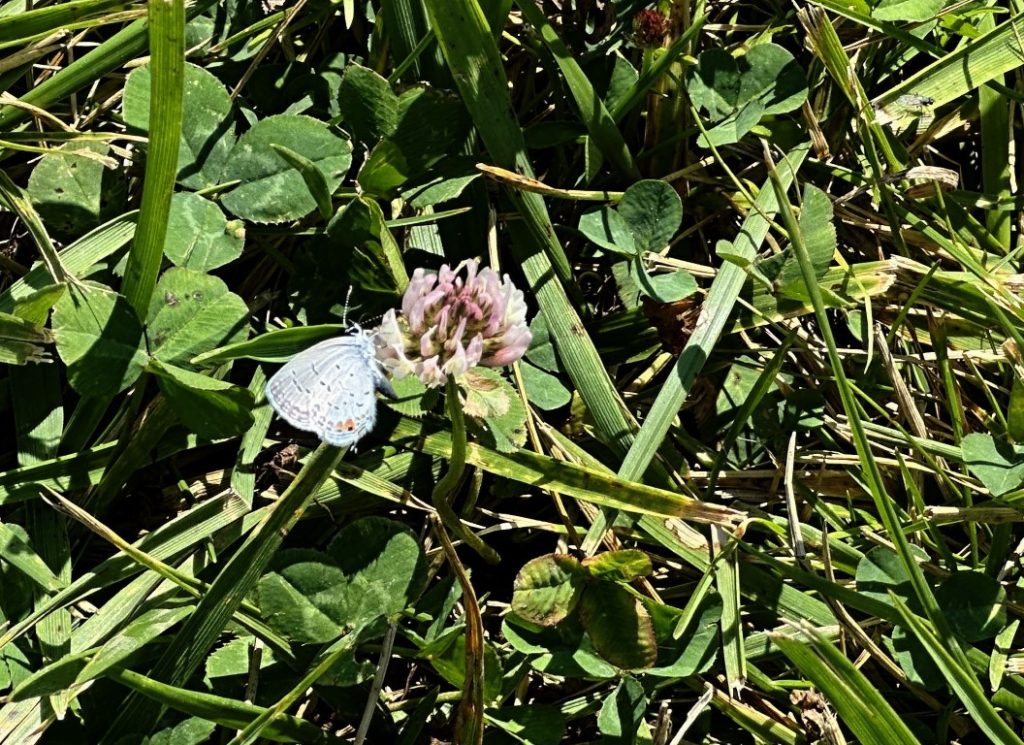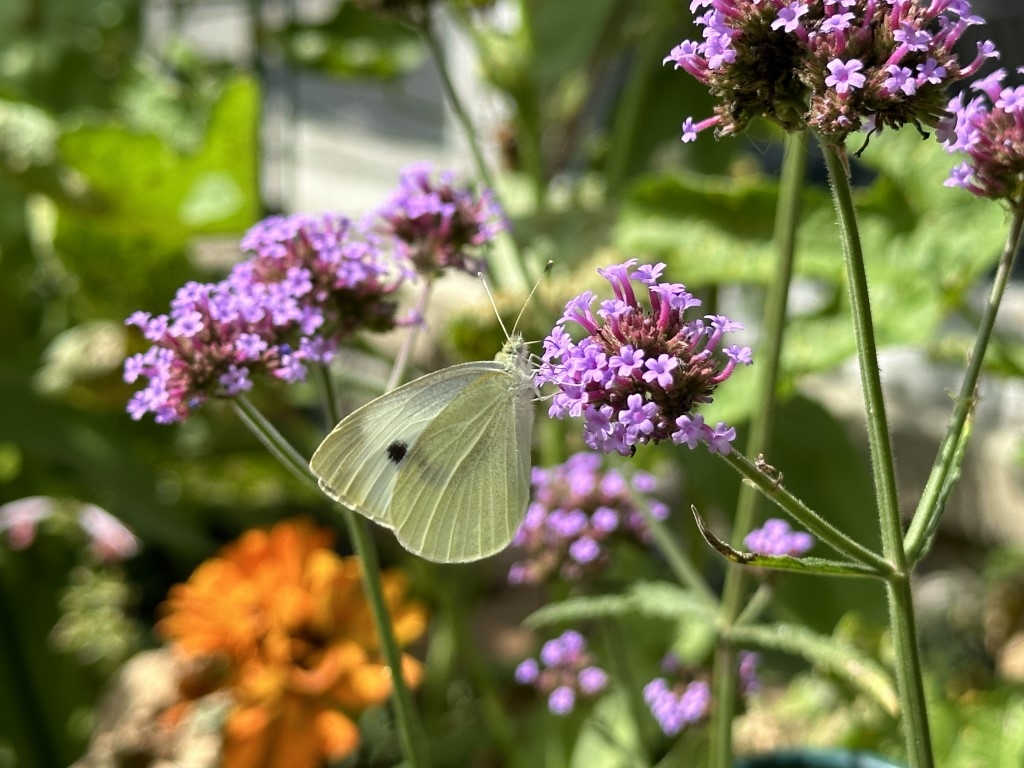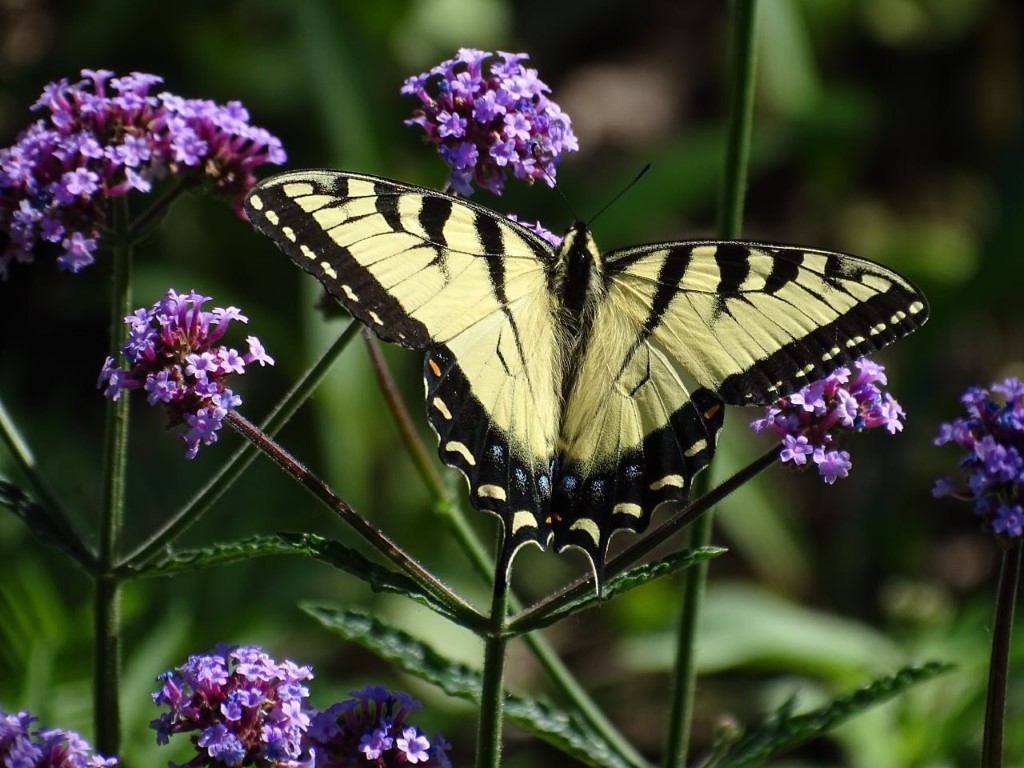Here’s part two of the summer butterflies I’ve seen so far this season.
This is a new one for me—the Eastern Tailed Blue. I spotted it on a grass hiking trail that winds through a prairie just outside of our city:

The Eastern Tailed Blue butterfly likes open, sunny spaces and the larvae prefer plants from the pea family including clover.
It’s also the most common Blue butterfly in Wisconsin and can be found gathering in groups in moist areas near ponds and streams.
This is another species where the adults do not live very long—an average of only 4 to 10 days!
Here is the most prolific butterfly I’ve seen this year. In fact I spotted one already during a warm spell in March!

The Cabbage White butterfly can be a vegetable pest because the larvae eat cabbage, kale, broccoli and cauliflower.
This butterfly can be white or yellow-white and has a 2-inch wingspan.
On dry days this summer I was usually able to spot at least one Cabbage White butterfly flitting from flower to flower in my annual beds.
The adults live about 3 weeks.
I usually see at least one Eastern Tiger Swallowtail visiting my backyard flowers each summer, but this year I’ve seen at least a half-dozen.
As you can see from the photo, they love verbena bonariensis, and in my backyard they often visit zinnias, dianthus and ageratums too.

This big butterfly can be seen in woodlands, but it also visits urban parks and gardens.
The caterpillars feed on lilacs, willows, tulip trees, cottonwoods and more.
Adult butterflies usually live about a month.
When I got out my butterfly identification guide I was surprised to see how many skipper butterflies there are in North America. And worldwide there are more than 3000 species!
Of course that makes it a little more difficult to ID skippers, but I’m pretty sure this one is a tattered Little Glassywing.

While this butterfly is seen in Wisconsin, it’s less common.
Most skipper adults live 2 to 4 weeks.
It’s been a great season for butterflies! I’m still hoping to see one or two more “new” butterfly species yet this year, but that will be more challenging since many of the flowers are done for the year, and the days are already getting shorter and cooler.
